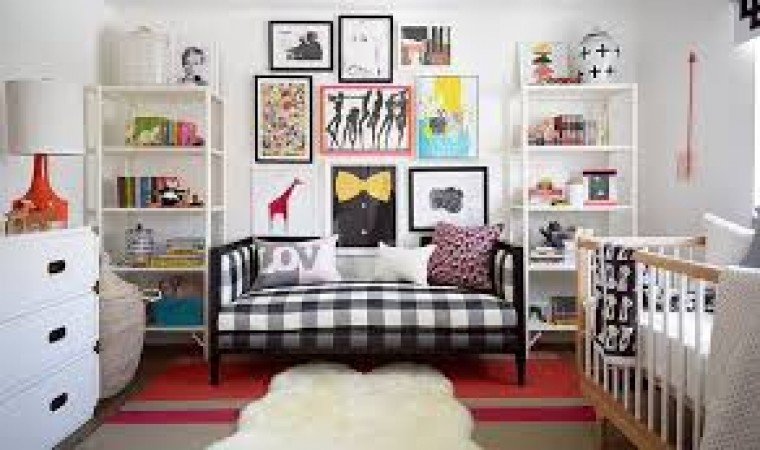When it comes to decorating a children's room, the goal is to create a space that not only looks visually appealing but also fosters creativity, imagination, and a sense of security. By considering various aspects such as colors, themes, organization, and functionality, you can transform a simple room into a magical haven where your child can thrive and feel truly special.
1. Choose a Theme that Sparks Imagination
- Why: A cohesive theme sets the tone for the entire room and provides a canvas for other design elements to come together harmoniously.
- How: Consider your child's interests, whether it's outer space, dinosaurs, princesses, or superheroes. Choose a theme that resonates with them and inspires their imagination.
2. Incorporate Vibrant Colors
- Why: Bright and cheerful colors can stimulate a child's senses and contribute to a lively atmosphere.
- How: Opt for a color scheme that complements the chosen theme while avoiding overwhelming the space. Use colorful accents such as bedding, rugs, and wall art to add pops of color throughout the room.
3. Prioritize Safety
- Why: Safety should always be a top priority when decorating a child's room to prevent accidents and injuries.
- How: Ensure that furniture is securely anchored to the wall to prevent tipping. Choose child-safe materials for furnishings and decorations, avoiding sharp edges and small parts that could pose choking hazards.
4. Create Functional Zones
- Why: A well-organized room with designated zones for sleeping, playing, and studying promotes efficiency and encourages independence.
- How: Arrange furniture to delineate different areas of the room, such as a cozy reading nook with a bean bag chair, a play corner with toy storage bins, and a study area with a desk and chair.
5. Personalize with Personal Touches
- Why: Adding personalized touches makes the room feel uniquely theirs and fosters a sense of ownership and belonging.
- How: Display your child's artwork, photographs, and crafts to showcase their creativity. Incorporate items that reflect their interests and personality, such as favorite books, sports memorabilia, or musical instruments.
6. Maximize Storage Solutions
- Why: Adequate storage helps keep the room organized and clutter-free, making it easier for children to find and put away their belongings.
- How: Utilize a combination of open shelving, bins, baskets, and closet organizers to store toys, clothes, books, and other essentials. Consider multifunctional furniture with built-in storage, such as beds with drawers underneath or ottomans that double as toy chests.
7. Create a Cozy Retreat for Sleep
- Why: A comfortable and soothing sleep environment is essential for a child's physical and emotional well-being.
- How: Choose a quality mattress and bedding that provide adequate support and comfort. Use blackout curtains or blinds to block out light and create a conducive sleep environment. Incorporate soft lighting, such as a nightlight or bedside lamp, for a calming ambiance.
8. Encourage Creativity and Play
- Why: Play is crucial for a child's cognitive, emotional, and social development, and the room should be designed to inspire creativity and exploration.
- How: Include ample space for imaginative play, such as a dress-up area, puppet theater, or building block station. Provide art supplies, easels, and a designated art corner where your child can unleash their creativity without worrying about making a mess.
9. Embrace Flexibility for Growth
- Why: Children's interests and preferences evolve over time, and a flexible room design allows for easy updates and adaptations as they grow.
- How: Choose versatile furniture and decor items that can be repurposed or easily swapped out to accommodate changing tastes and needs. Consider investing in modular furniture or adjustable shelving systems that can adapt to different configurations.
10. Foster a Sense of Wonder
- Why: Above all, the goal of decorating a children's room is to create a space that sparks joy, wonder, and a sense of magic.
- How: Incorporate elements of whimsy and imagination, such as fairy lights, themed wall decals, or a ceiling adorned with glow-in-the-dark stars. Encourage storytelling and make-believe adventures to ignite your child's imagination and make their room truly special.
In conclusion, decorating a children's room involves more than just choosing paint colors and arranging furniture. It's about creating a nurturing and inspiring environment where your child can grow, learn, and dream. By following these tips and infusing the space with love and creativity, you can design a room that will be cherished by your little one for years to come.
Leave Shimla-Manali! Everyone has failed in front of this hidden place of Himachal!
Where do trains with revolving seats, glass windows and unique coaches run?
This is the best place to visit in Delhi
